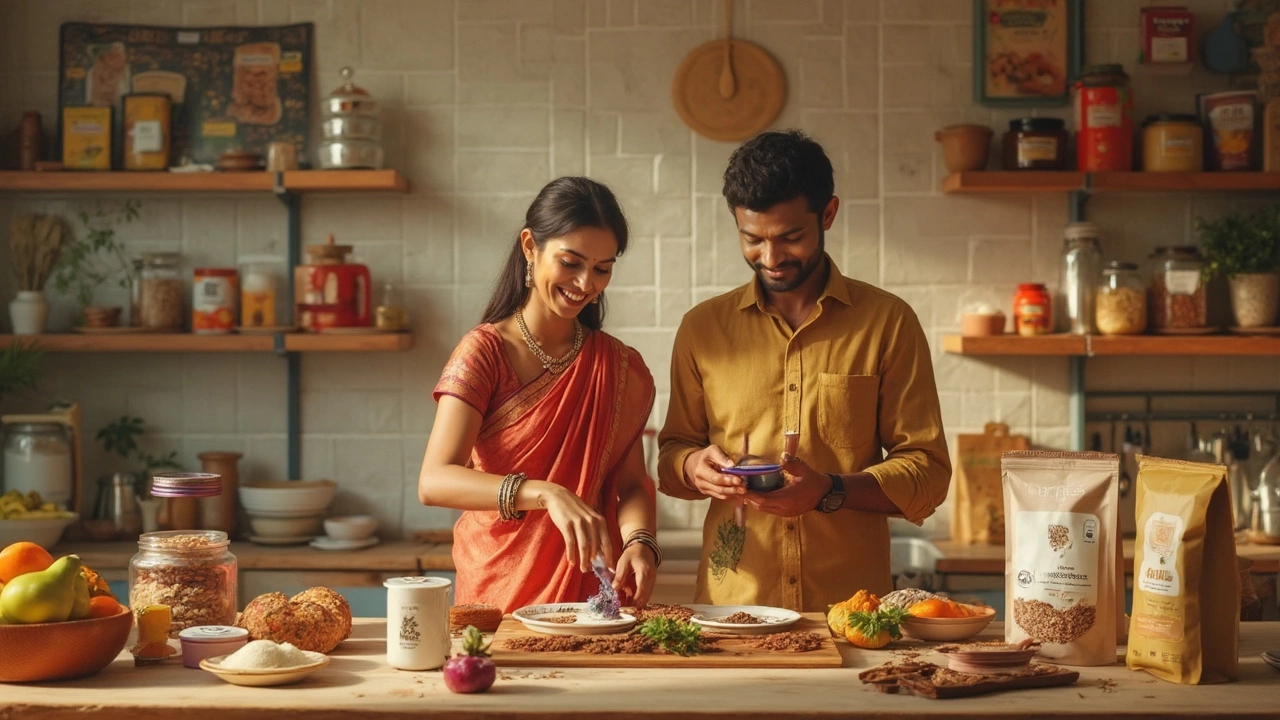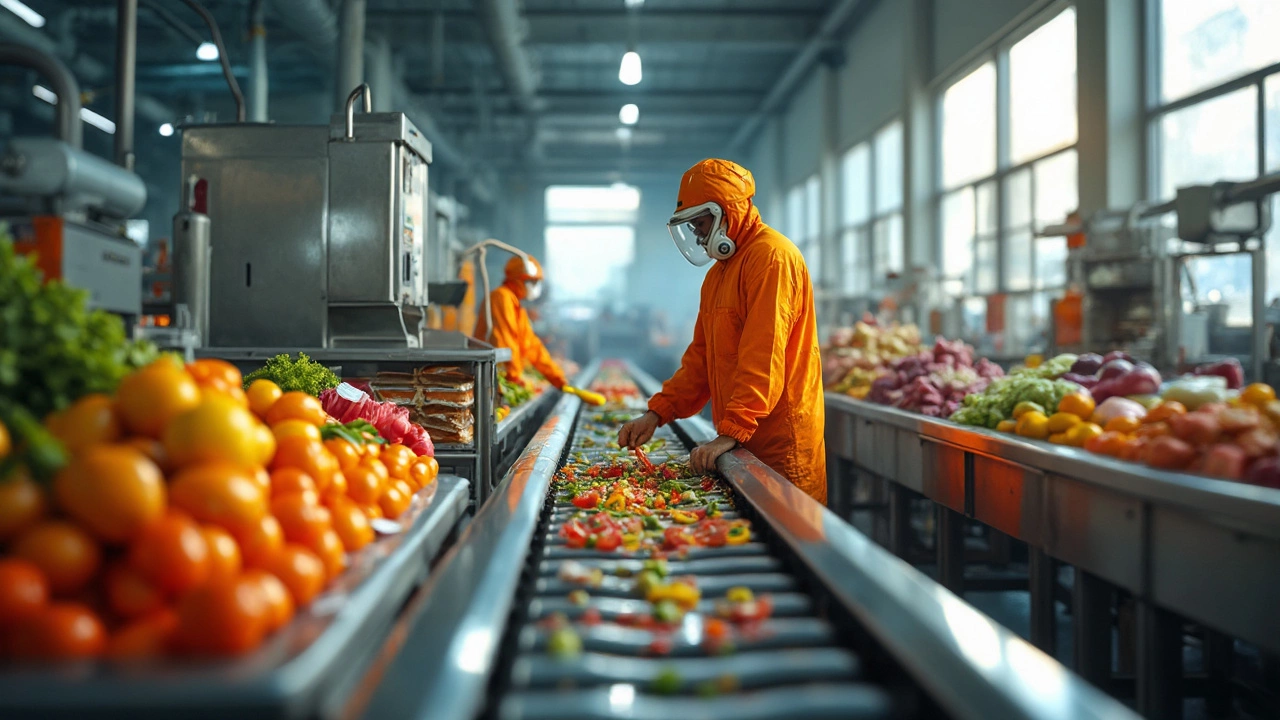The world of food processing covers way more ground than most people think. It’s not just about turning raw stuff into canned soup or frozen dinners. Ever wondered how your chips stay crunchy or your veggies last weeks in the fridge? Spoiler: it’s all about the steps inside food processing units.
Think of food processing as a big umbrella that covers everything from washing apples to creating protein bars. Each field inside this industry solves a different problem—like stopping spoilage, making food easy to ship, or keeping flavors locked in.
Some of these processes go back centuries, like smoking fish or drying fruit. But a lot is high-tech now, with machines that sort, cut, pasteurize, or freeze food in ways people never imagined a generation ago.
- What Exactly Is Food Processing?
- Fields of Food Processing Explained
- Preservation: Keeping Food Fresh
- The Role of Packaging and Safety
- Tech Trends and Future of Food Units
What Exactly Is Food Processing?
Food processing is basically everything people do to change raw food into something that’s ready to eat, safer, or easier to store. That could be washing, cutting, freezing, cooking, canning—whatever turns farm goods into the stuff we buy at stores. Food processing is everywhere, from your sliced bread all the way to instant noodles.
When folks talk about processing, it’s not always about weird chemical stuff or junk food. Simple things count too, like grinding wheat for flour or pasteurizing milk so it doesn’t go bad in two days.
Modern food processing units can handle massive quantities, using careful checks to avoid foodborne bugs. These places are set up to keep food safe, fresh, and looking good. Grocery shelves would look pretty empty without them, especially for things like dairy, meat, and packaged snacks.
- Preservation is a huge part—freezing, drying, canning, or pickling so food lasts longer.
- There’s a lot about food safety too. Steps like pasteurization kill harmful germs and keep people healthy.
- Processing also covers making food convenient—pre-cut veggies, sealed packets, snack-sized cheese slices.
- And don’t forget packaging. Without good packaging, food goes stale or gets contaminated way faster.
Here’s a quick look at how often we come across processed foods in everyday life:
| Type of Food | Common Processing Steps |
|---|---|
| Milk | Pasteurizing, homogenizing, packaging |
| Bread | Mixing, kneading, baking, slicing, packaging |
| Frozen Vegetables | Washing, cutting, blanching, freezing, packaging |
| Canned Beans | Soaking, cooking, canning, sealing |
The upshot? Every meal probably has something that went through a food processing step. That’s what keeps our kitchens stocked and our meals safe.
Fields of Food Processing Explained
The food processing industry is split into a bunch of fields, each doing its bit to get food from farms to your plate. Here’s a straight breakdown of the main areas in these processing units and what each one focuses on.
- Primary Processing: This is the first step. It’s about taking raw crops or meat and making them ready for the next stage. Think of cleaning, cutting, milling grains into flour, pasteurizing milk, or butchering whole animals. It’s mostly about prepping and not changing the basic nature of the food.
- Secondary Processing: Here, things get transformed. It’s where raw or minimally processed stuff gets turned into something new. Bread, cheese, sausages, pasta, and even cookies—these come from mixing, cooking, baking, fermenting, or any process that makes something totally different from raw ingredients.
- Tertiary Processing (or Convenience Foods): This is where ready-to-eat items are made. Frozen meals, snack bars, instant noodles—the sorts of foods you reach for when you want something quick. These involve more steps for taste, texture, shelf life, and convenience.
- Preservation: Stopping spoilage can mean freezing, canning, drying, or pickling. Preservation keeps food safe, stops waste, and is big in food processing and food safety. Without it, supermarket shelves would look pretty empty.
- Packaging: Don’t skip the last step. Packaging isn’t just for looks—it helps keep food safe, fresh, and easier to transport. From vacuum sealing to Tetra Paks, the right package matters as much as what’s in it.
Here’s a quick look at how these fields stack up in India, a major food processing hub:
| Field | Main Examples | Market Share (approx.) |
|---|---|---|
| Primary | Milling, Milk Pasteurization | 40% |
| Secondary | Baking, Dairy, Pasta | 35% |
| Tertiary | Ready-to-Eat Meals | 15% |
| Preservation | Freezing, Canning, Pickling | 7% |
| Packaging | Sealing, Labelling | 3% |
Most factories handle a mix of these steps. For example, potato chips companies go all-in, starting from cleaning and slicing (primary), frying and seasoning (secondary), to sealing them up in shiny bags (packaging and preservation).
Each field relies on its own tricks and rules for making sure products are safe to eat—and tasty, too. Food processing is a team effort across all these areas.

Preservation: Keeping Food Fresh
When you grab a bag of frozen peas or a jar of salsa, you’re actually seeing the results of food preservation in action. The main idea? Stop food from going bad, keep it safe, and lock in that flavor. Food processing units use a bunch of different ways to pull this off.
Here are the most common preservation methods you see in the industry:
- Freezing: Probably the most familiar. This method slows down the action of bacteria and mold by dropping the temperature way below zero. That’s why you can stash chicken or berries in the freezer for months.
- Canning: By sealing food in air-tight containers (like tins or jars) and heating it to kill microbes, canning lets you enjoy peaches or beans that were packed years ago. No fridge needed, either.
- Drying: Pulling out water stops bacteria, which is why you’ll see dried fruit and beef jerky sitting on shelves for ages. Some places get fancy with freeze-drying—think astronaut ice cream.
- Pickling: Vinegar and salt can turn cucumbers into pickles or cabbage into sauerkraut. This combo keeps spoilage at bay for months.
- Pasteurization: A quick heat zap (like with milk or juice) knocks out bad germs without ruining the taste. Most dairy in stores goes through this step before it lands in your fridge.
Some high-volume processing units use a mix of methods to hit the sweet spot for safety and shelf life. A jar of salsa? It might be heated, sealed, and even hit with preservatives to make sure you don’t get a surprise science experiment when you open it.
Here’s a handy look at how different methods stack up on shelf life and use:
| Preservation Method | Common Foods | Shelf Life |
|---|---|---|
| Freezing | Meat, vegetables, bread | 6–12 months |
| Canning | Sauces, fruits, veggies | 1–5 years |
| Drying | Fruit, grains, jerky | 6–18 months |
| Pickling | Pickles, kimchi, eggs | 1–12 months |
| Pasteurization | Milk, juices, eggs | 1–3 weeks (refrigerated) |
If you’re looking to keep food fresher at home, a lot of these techniques work in your own kitchen. Try freezing leftovers in small portions so you only thaw what you need. Stash dried foods in airtight jars. And when in doubt, check those expiration dates—industrial and home preservation both depend on keeping things clean and sealed.
The Role of Packaging and Safety
Packaging isn't just about flashy labels or making products look good on shelves. The real job is to protect what’s inside and keep food safe from the moment it leaves the processing units until you eat it. Food packaging keeps out moisture, bacteria, air, and even light—basically anything that could mess with flavor, texture, or safety.
Without the right packaging, your bag of chips would get soggy, and your juice could be crawling with germs by the time you open it. That’s why the type of material matters—plastic wrap, glass jars, tin cans, or special cartons all serve different foods best. Modern packaging also uses vacuum sealing and modified atmosphere packs, where the air inside gets swapped for gases that slow spoilage. A study by the Institute of Food Technologists found that these advanced methods can extend shelf life by up to 50% compared to old-school packaging.
Safety checks don’t stop at packaging. Every food processing unit must stick to strict regulations. In the U.S., the FDA and USDA both set rules for how food should be processed, packaged, and stored. Plants have to monitor for hazards like bacteria, metal fragments, or allergens almost nonstop. If one product fails a random check, factories can recall thousands of items in a heartbeat.
| Common Packaging Materials | Main Perks |
|---|---|
| Plastic (PET, PE) | Lightweight, cheap, see-through |
| Glass | Non-reactive, recyclable, great for drinks |
| Metal (cans) | Keeps out light/air, long shelf life |
| Cardboard/carton | Good for dry foods, easy to print info |
If you like fewer chemicals touching your food, look for BPA-free labels on cans. If waste bugs you, aim for recyclable or compostable packaging—these are getting more common, especially in the snack and dairy aisles.
“Consumers rely on packaging not just for convenience, but for protection against contamination and spoilage.” — Institute of Food Technologists
Packing tech keeps changing fast. Smart labels now track temperature changes, markers can flag if a milk carton has been left out too long. That’s pretty handy if you care about not wasting what you buy—as most people do now, with food prices the way they are.

Tech Trends and Future of Food Units
Tech is changing the game in food processing. Walk inside a modern plant and you’ll find robots, lasers, and all sorts of sensors running the show. Automation has cut down on mistakes, boosted speed, and even made things a lot safer for workers. Now, machines can spot bad apples (literally) in a blink, batch ingredients just right, and pack foods faster than ever.
AI is another big leap. With machine learning, units now predict shelf lives, fine-tune recipes, and notice problems before they become expensive recalls. Imagine software that knows if a batch of snacks needs more crunch, or can spot sneaky bacteria just by scanning images. That’s not science fiction—companies are already doing it.
Smart packaging is on the rise too. Some packages change color if the food inside gets too warm or starts to spoil. Others use QR codes to give you the food’s story, right down to the farm it came from. This isn’t just cool—it means less waste since food stays safe and fresh longer.
| Tech Trend | What It Changes |
|---|---|
| Robotics | Speeds up sorting, slicing, and packing |
| AI/ML | Better quality, fewer safety issues |
| Smart Packaging | Longer shelf life, more info for shoppers |
| IoT Sensors | 24/7 monitoring of temperature, humidity, contamination |
There’s more on the horizon. 3D food printing lets companies shape everything from pasta to custom nutrition snacks with insane precision. And with food safety always in the spotlight, many units are switching to blockchain for tracking—so every ingredient’s journey gets logged in real time. As tech gets cheaper and easier, even smaller food processing units are jumping in. If you’re thinking of starting something in this space, learning these tools now will set you up for the next wave.
